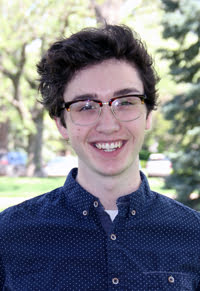“Before I came to Hastings College, I hadn’t even dreamed of going to graduate school, now I feel like that’s just a natural next step.” –Brian Whetstone
Brian Whetstone, a junior from Kearney, Nebraska, uttered those words fresh off a string of academic successes spanning the past year, from receiving best paper awards at academic conferences to completing an intensive summer program in the heart of Colonial America. But according to Whetstone, all of those successes share one contributing factor: the guidance and genuine support of his professors at Hastings College.
“My professors have raised my academic standards to a point I could never have envisioned coming into college,” Whetstone said. “And in addition to their rigor they genuinely care; about my academics, my success and above all me as a person.”
Reinterpreting the past
 Despite crediting Hastings’ faculty for their help along the way, Whetstone has developed quite an impressive record through his own hard work. As a sophomore, his research on the Frank House Museum in Kearney, Nebraska and the changing narratives of the women who lived there earned him Best Undergraduate Paper awards at both the Missouri Valley History Conference in Omaha as well as the Texas A&M History Conference at the University.
Despite crediting Hastings’ faculty for their help along the way, Whetstone has developed quite an impressive record through his own hard work. As a sophomore, his research on the Frank House Museum in Kearney, Nebraska and the changing narratives of the women who lived there earned him Best Undergraduate Paper awards at both the Missouri Valley History Conference in Omaha as well as the Texas A&M History Conference at the University.
Conducting his research as a recipient of Hastings College’s Excelsior Fund Grant, Whetstone spent the summer of 2015 at the Frank House scouring through countless sources, not only on the history of the house, but the history and interpretation of the museum itself. He emphasized the importance of the women who lived there, critiquing their omission in both previous histories and the interpretation purported through the museum.
Dr. Michella Marino, assistant professor of history and Whetstone’s advisor, has worked with him throughout his college career, and directly advised his research on the Frank House.
“As a professor and mentor, it’s been extremely rewarding watching each step of Brian’s development as a historian–from taking concepts in class and applying them to his work at a museum, to crafting an original research project on the Frank House,” said Marino.
Pursuing public history
Through working at the Frank House and conducting his research on it, Brian developed a keen interest in not only traditional academic history – but public history – the restoration, archivation and interpretation of the past for the benefit of the general public; trading the tweed and elbow pads of a historian for the jeans and t-shirt of a preservationist.
“Of course I’m still interested in traditional history,” Whetstone said. “But as far as my career, I feel a true calling to the preservation of historical buildings. I’ve always been fascinated by architecture, and combining that with my newfound interest in telling their stories, and the stories of the people who inhabited their walls, historic building preservation is a perfect way to combine the two.”
Counting nails in the Carter House
 To try his hand at preservation, Whetstone spent the summer of 2016 enrolled in a field school on architectural history at the College of William and Mary in Williamsburg, Virginia. William and Mary is perfectly situated in Colonial Williamsburg, and the restored former capital of the Colony of Virginia became his classroom.
To try his hand at preservation, Whetstone spent the summer of 2016 enrolled in a field school on architectural history at the College of William and Mary in Williamsburg, Virginia. William and Mary is perfectly situated in Colonial Williamsburg, and the restored former capital of the Colony of Virginia became his classroom.
“We spent the first few days learning about architecture and preservation, but then we went right to work on the Robert Carter House in Williamsburg,” said Whetstone. “Our class completed a Historical American Buildings Survey, which included details as fine as counting the number of nails in the floorboards.
At the end of the program, Whetstone and his classmates handed their survey over to Colonial Williamsburg to begin the historical restoration of the house to be opened to the public. Thus, not only did he learn more about preservation, but he truly experienced it in action.
Conversing about the past
But through his experience at William and Mary, Whetstone developed an appreciation for how unique the faculty at Hastings College truly are.
“One thing that really stood out to me was the relationship between professors and students, and how different that was than what I have experienced at Hastings,” Whetstone said. “I would casually mention how Dr. Marino has brought food to class or how the HC professors and students hang around the lounge in McCormick Hall talking about the past, which absolutely astounded my summer classmates from other schools.”
According to Professor of History Dr. Robert Babcock, the difference is intentional.
“History is not just memorizing names and dates and putting them in chronological order; when we do history correctly, it’s sitting around over coffee and talking intelligently about the past,” said Babcock. “In the Hastings College History Department we try to listen to our students, as students develop their own interests — even if they’re not our own — we try to encourage them to pursue those interests, and we have a lot of both curricular and extracurricular ways in which they can do that.”
Proposing panels alongside professionals
Whetstone sketches details of the Robert Carter House to be used in later restoration efforts.
Those intelligent discussions about interesting things in the past continue to inspire and push Whetstone to tackle daunting projects of genuine interest to him. Most recently, he put together an accepted panel for the annual conference of the National Council on Public History, titled, “Finding Meaning in the Middle: Reinterpreting the Narratives of Historic Sites through Women’s History.” Building on his research at the Frank House and experiences in Virginia, Whetstone sought out other public historians with similar interests, inviting them to be on his panel, all of whom are graduate students or professors holding a doctorate. In fact, Whetstone will be the only undergraduate presenting at the conference at all, let alone to organize an entire panel.
“Brian doesn’t shirk away from hard work and consistently challenges himself to try new things and explore various avenues of historical inquiry and methodology, Marino said. “The acceptance of his panel proposal at a national conference with professional practitioners of history is a clear testament to this.”
When looking back on his experiences, Whetstone continues to be surprised at all he has accomplished in only his first two and a half years at Hastings College.
“When I first stepped foot on campus as a freshman, I knew I wanted to major in history, but had no idea where I wanted to go from there,” said Whetstone. “Now I’m not only planning on attending Graduate school, but I feel very well prepared to do so.”

